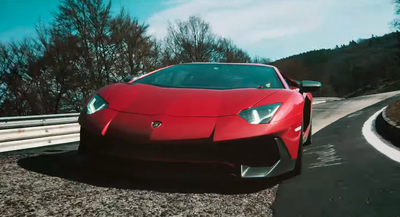The 6 Most Important Nurburgring Laps In Recent Years

It’s easy to moan about the Nurburgring lap times set by car manufacturers, and Lord knows we’ve done our fair share of complaining. We’ll sigh when a car maker decides it’s just set some dubious record (fastest production car that’s not quite a production car driven by a male over the age of 37-and-a-half, maybe), and groan when another tells you the sport mode of its car is ‘optimised for the Nurburgring’, when that’s of little use during a drive of the A603 near Bedford.
However, there have been some manufacturer-backed laps that have genuinely astonished us in recent years. And after the current speed limits are dropped - something that’s expected next year after safety improvements are made - we can’t wait to be astonished a little more. After all, the Green Hell is the most challenging circuit in the world, so if a car can perform well there, that’s a damn good sign. Here are the laps that grabbed our attention the most:
The SR8 LM might look like a racing car that’d only ever venture onto the road on the back of a trailer, but it’s actually street legal. The work of small British firm Radical, the SR8 LM picked up where the regular SR8 left off with its 6min 55sec lap time, and smashed it to bits with a 6:48.
At the heart of this roof-less slice of madness is a 2.8-litre V8, made from two Suzuki Hayabusa motorbike engines. The result? 449bhp, which is a healthy figure in something weighing around 700kg.
To prove that the SR8 still worked as a road car, driver Michael Vergers even drove it all the way down to the Nordschleife from the UK on the same set of tyres he’d later use for the lap. Still, it is stretching the term road car to its very limits, so for the fastest lap for a production machine that’s not just a racing car with number plates, you have to look to Porsche.
Of the ‘Holy Trinity’ of hybrid hypercars, the 918 is the only one to be given the official Nurburgring lap time treatment. In 2013, it dipped below the magic seven minute mark with current Porsche 919 World Endurance Championship driver Marc Lieb at the wheel.
As impressive as the 918’s time is, it’s arguably trumped by the 6min 59sec effort recently clocked by the Lamborghini Aventador SV. This is a time when many seem to think cars from Lamborghini aren’t for serious drivers - instead being for posers or people who like to trundle down Knightsbridge pointlessly revving at a standstill to the delight of the world’s Shmee clones. So to rock up to the ‘Ring with the Aventador SV and come within two seconds of the Porsche’s lap record is worthy of a doff of the cap.
It’s particularly remarkable given the entirely different schools of thought these cars were born from. The Porsche has its V8 hybrid powertrain, while the less powerful Lamborghini makes do with a thoroughly old-school method of propulsion: a bloody great N/A V12.
Not long after giving me a quick and enormously sideways shotgun ride around Castelloli circuit in Spain in the new Seat Leon ST Cupra, World Touring Car Championship driver Jordi Gene told me something quite interesting. He reckoned this estate version of the scorching Leon Cupra should be even faster around the Nurburgring than its hatchback brother, despite the extra weight on board. Sure enough, he proved that to be correct by shaving 0.4sec off the hatch’s time, breaking the record for the fastest production estate in the process.
So, why was it quicker? There are two main factors. Firstly, the estate has a better drag coefficient than the hatchback, giving it more straight-line speed on the straights. Secondly, the longer body makes the rear a little more playful, which helps when it comes to positioning the car for certain corners.
This effort from Honda is a little cheeky, as although it claimed it broke the front-wheel drive record, it wasn’t a fully-fledged production Civic Type R. It was actually a development car with a roll cage fitted, although it apparently didn’t affect rigidity.
In any case, the result was rather staggering. Not only is it four seconds faster than the previous front-wheel drive record set by the Renaultsport Megane Trophy, it also put a lot of more powerful cars to shame. Admittedly, not all of those laps were set by manufacturers, but even so, it’s damn impressive.
OK, so this one wasn’t actually about setting a good time, rather fuel economy - hence why the lap was shockingly slow even for a Prius. The idea was to set the most economical lap by sending the plug-in hybrid version of the car around with a full charge, making sure the engine kicked in as little as possible.
With massive elevation differences and a 60km/h (37mph) minimum speed limit at the ‘Ring to keep up with, this was no mean feat. However, the Prius completed the 12.9-mile lap with the engine springing to life just once, using around five tablespoons of petrol and giving a figure of 698mpg.
What we particularly like about this lap - undertaken by Toyota GB - is that we get the feeling that the whole idea was inspired at least in part to troll petrolheads a little. After all, taking the Prius and setting a ‘record’ at this haven of speed does seem deliberately heinous…















Comments
No comments found.